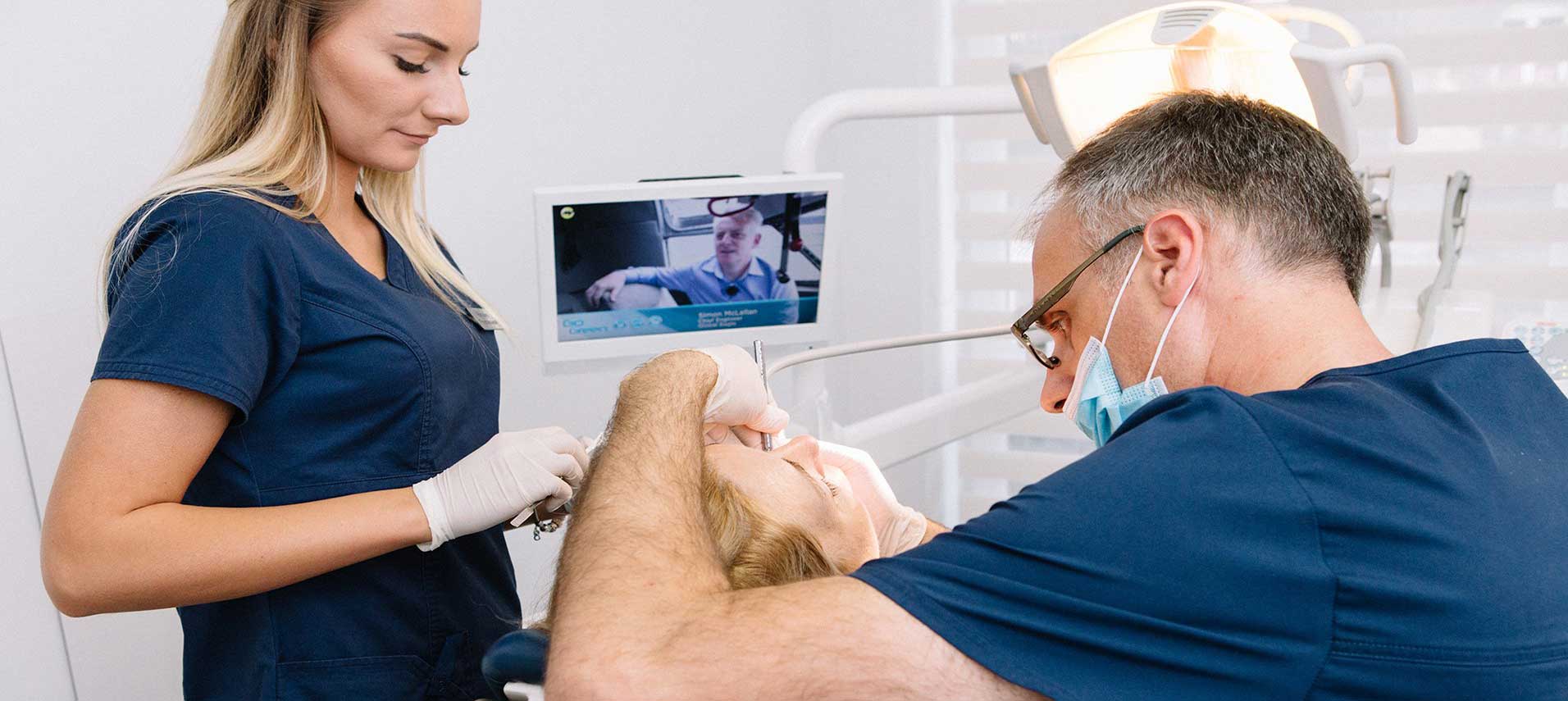DENTAL IMPLANTS
Recently, implantology, as a branch of dentistry has advanced significantly as a highly specialized technique. The effectiveness of dental implants is, according to statistics, 96% higher now, which gives patients the ability to continue normal functioning after installation as well as with their natural teeth. Dental implants nowadays become a top of the mind solution when losing one tooth, a few teeth or a whole jawbone.
EFFICIENT AND PERMANENT WAY FOR RECONSTRUCTING YOUR TEETH
The dental implant consists of 2 parts, the first part that is inserted into the bone in the form of a titanium screw and imitates the root of the teeth and the other, a crown part that imitates a crown of brushed tooth which is ready to be the carrier of definitive prosthetic work: crowns, bridge, etc.
In certain situations, the implant can immediately replace the missing tooth. For example, in the event of an accident and an outbreak of one of the frontal teeth without damaging the jaw bone, the implant is a way to bring the smile back to the condition before the accident in only a few hours with the setting of a temporary crown on the implant.
INDICATIONS FOR IMPLANTATION
With great technological improvements in the last few years, the number of situations indicated for the implant installation has increased significantly, and the therapy itself has become commonplace and available to most people.
Good to know: Implant installation is a surgical intervention that is usually simple and completely painless. It is performed in local anesthesia, as well as caries treatment. In order to incorporate dental implants, proper surgical planning and preparation of the patient is necessary. One of the golden standards today is the creation of a 3D ortho or CBCT image of the desired region. On the basis of these recordings, we obtain information on the height and width of the bone, which further determines the dimensions of the implant.


